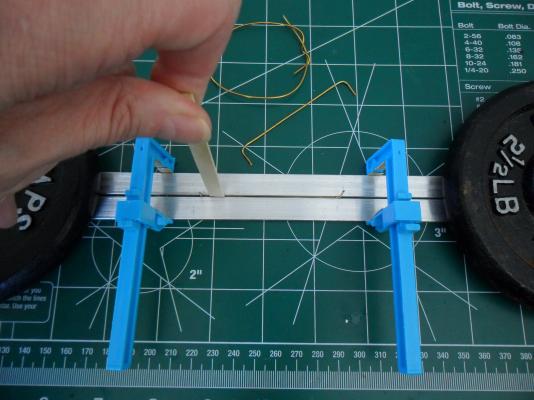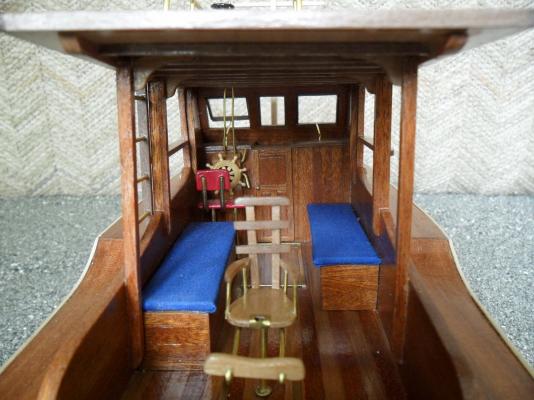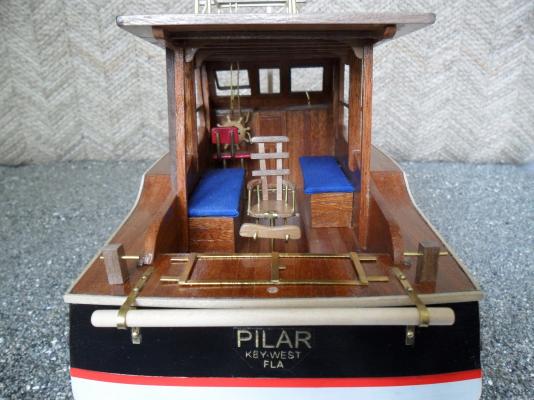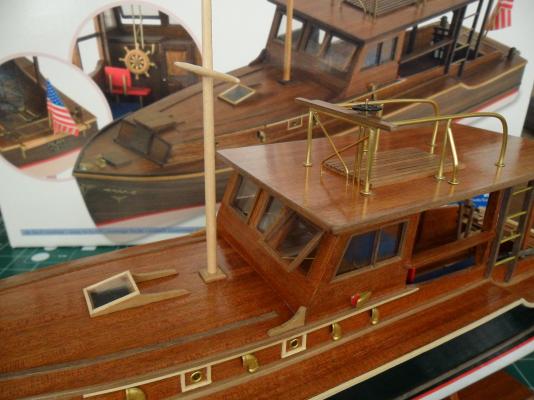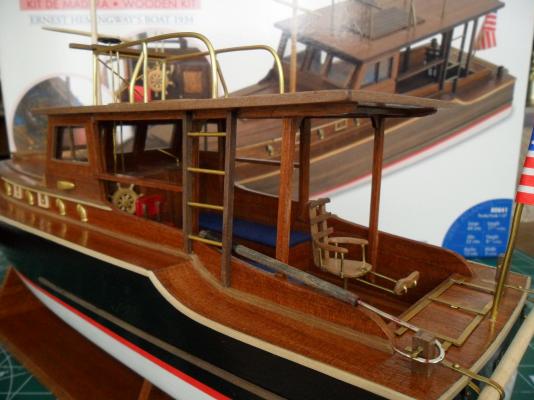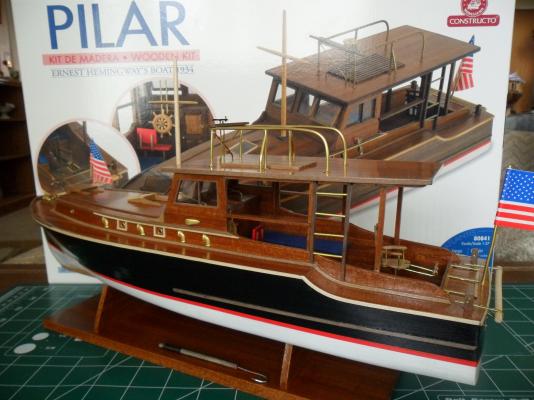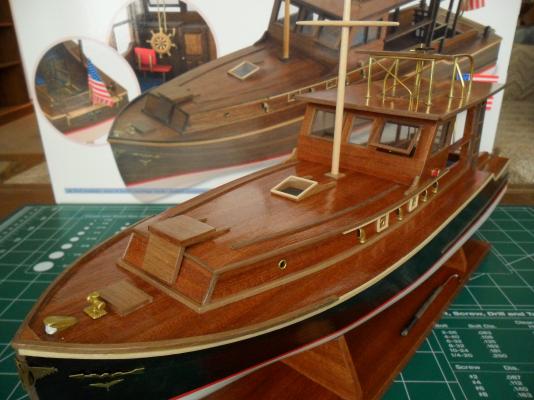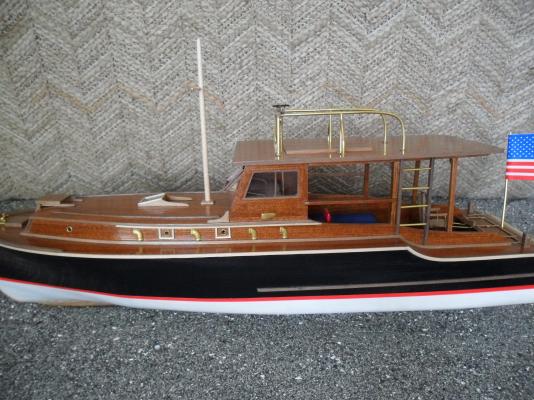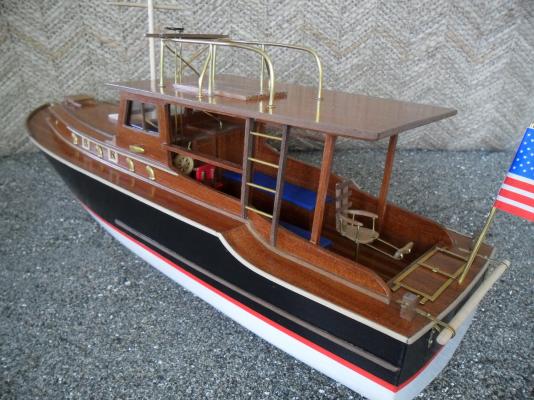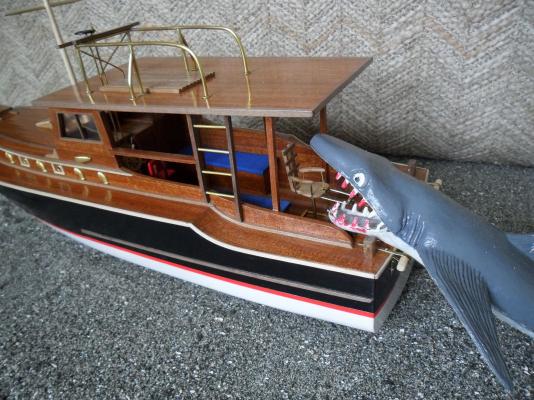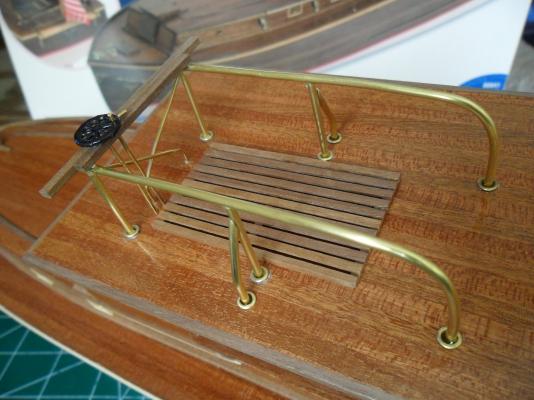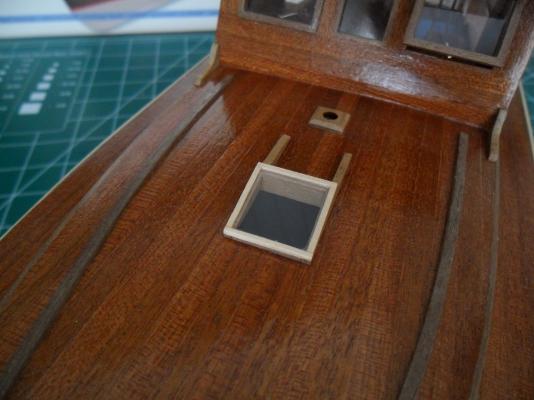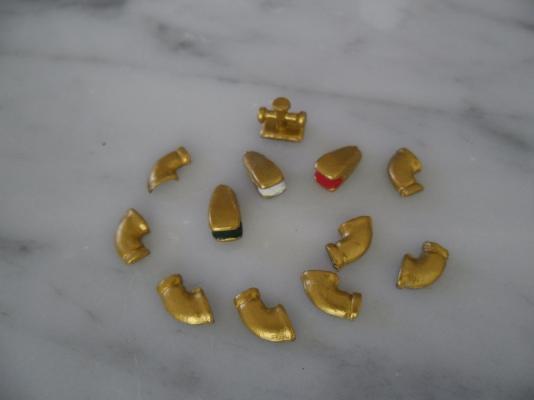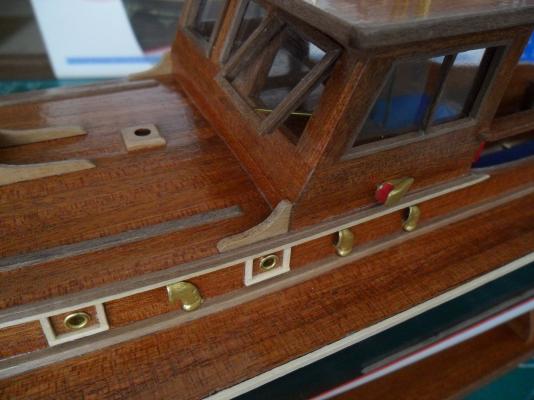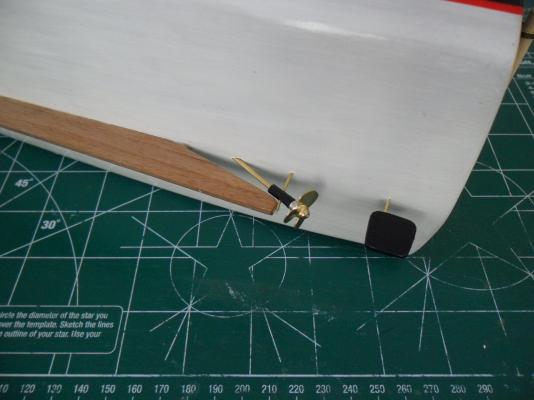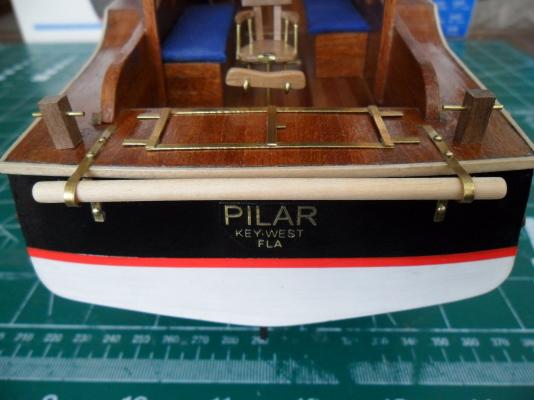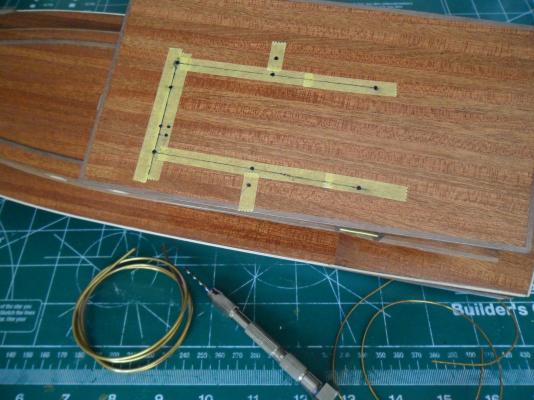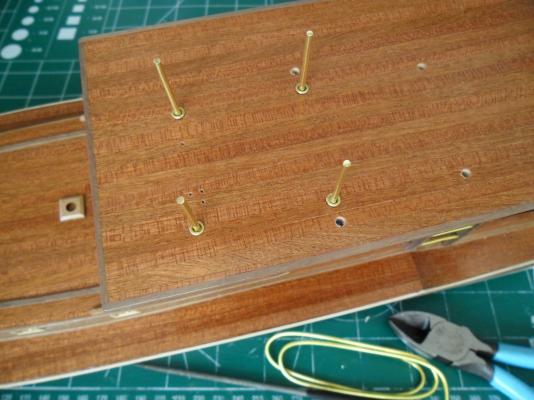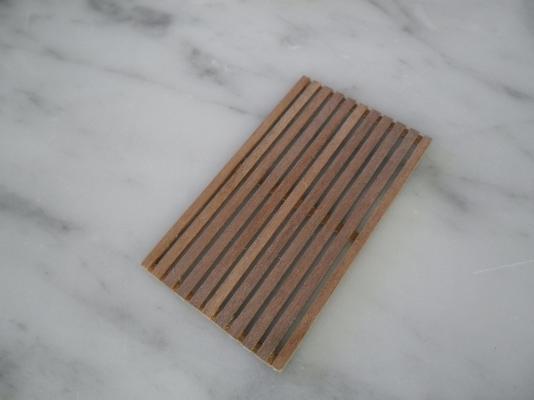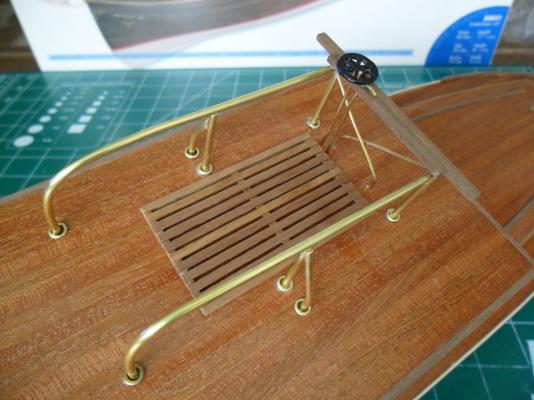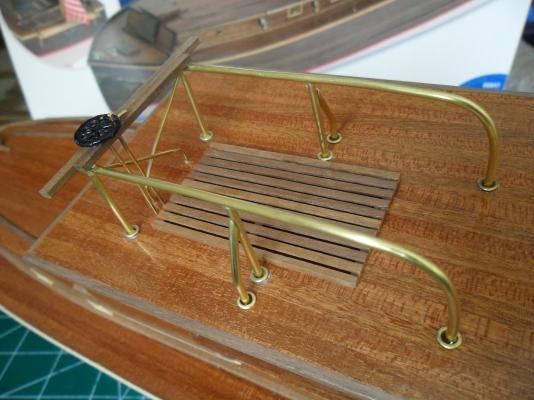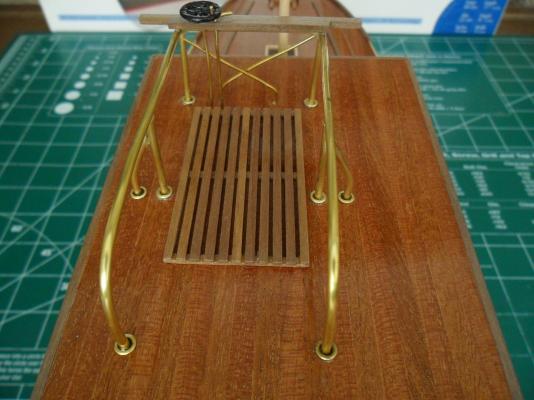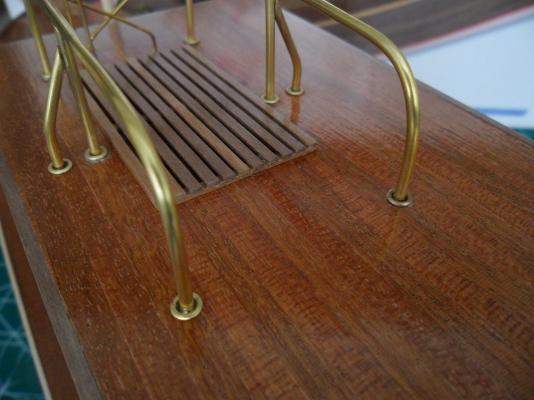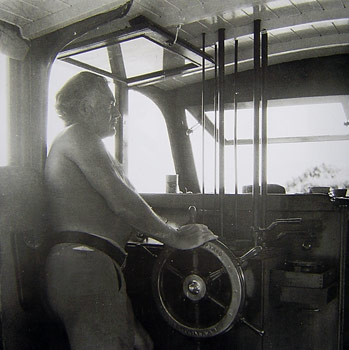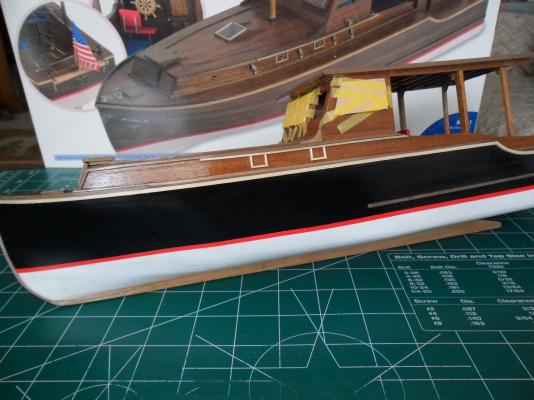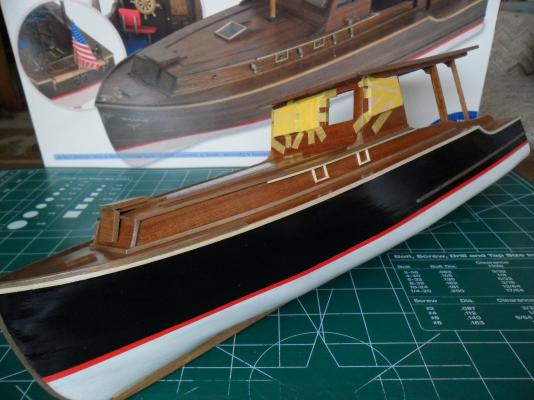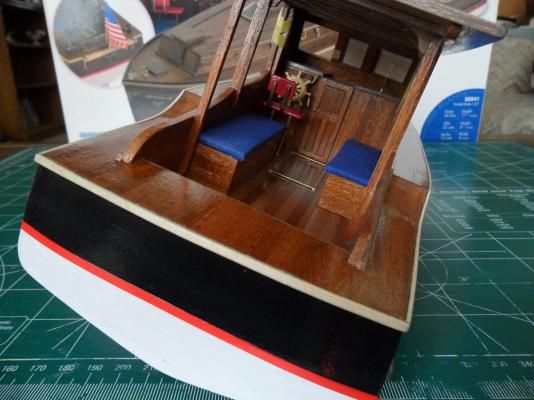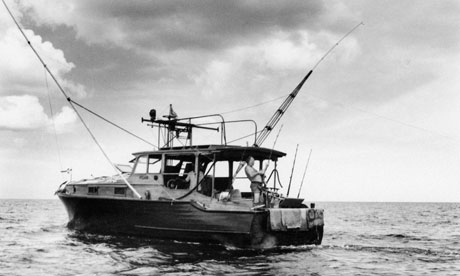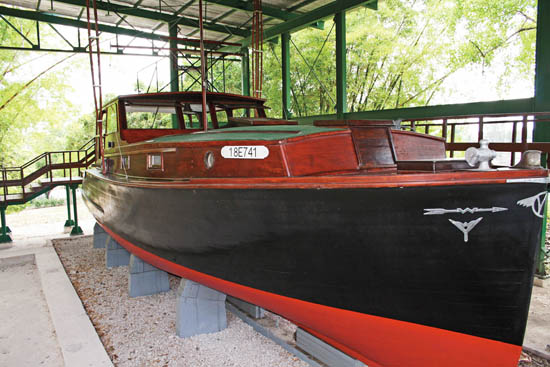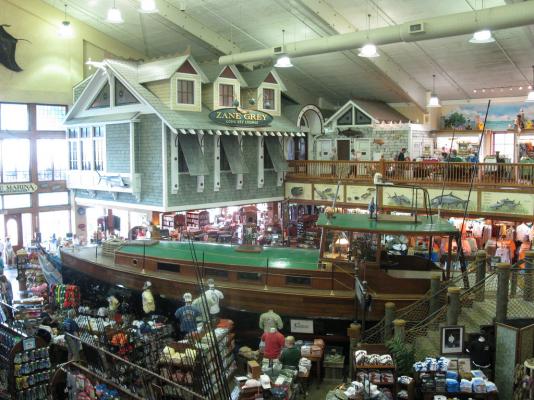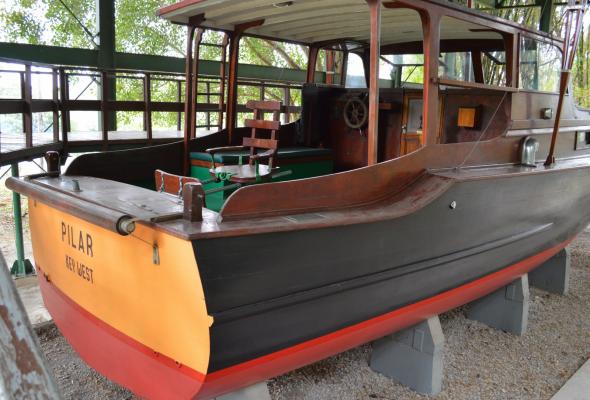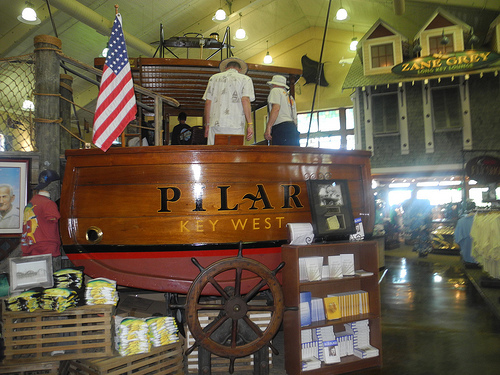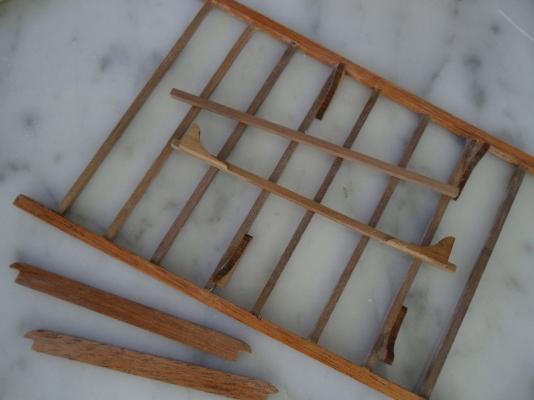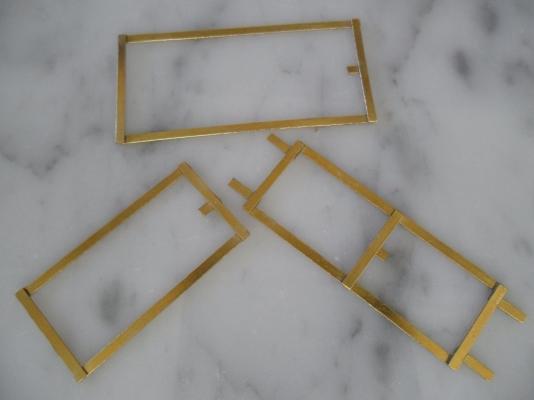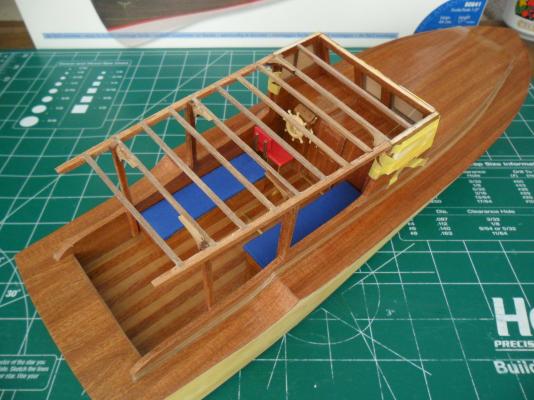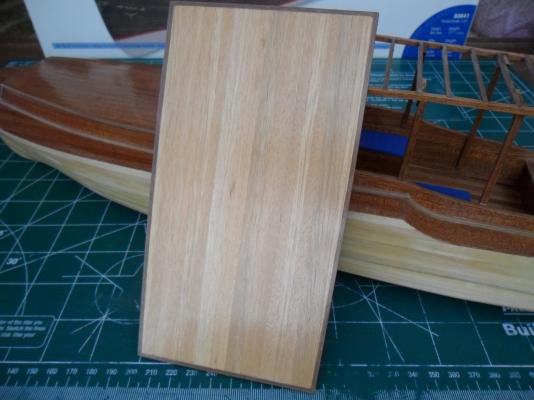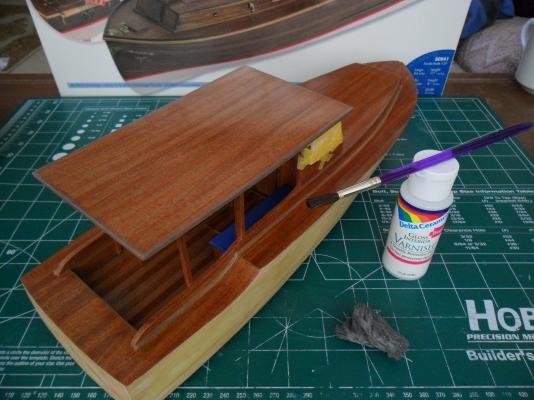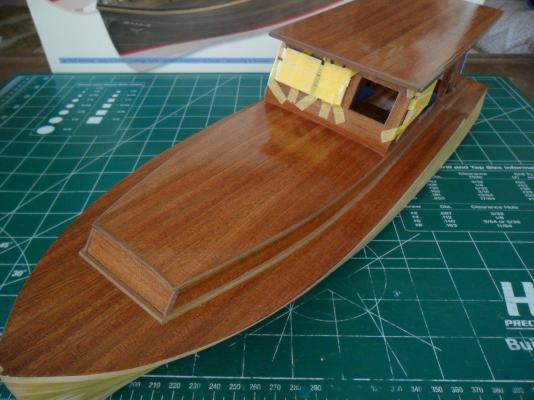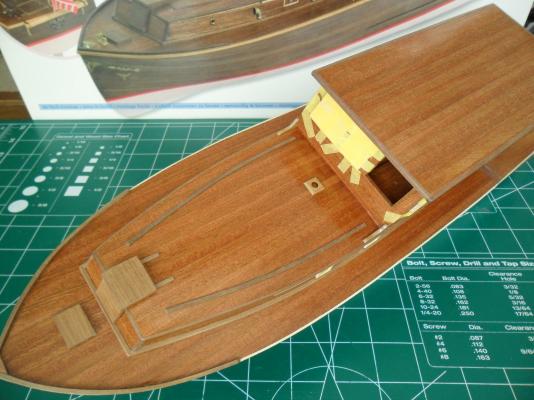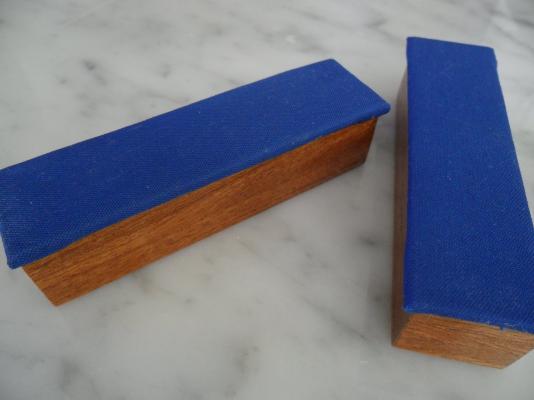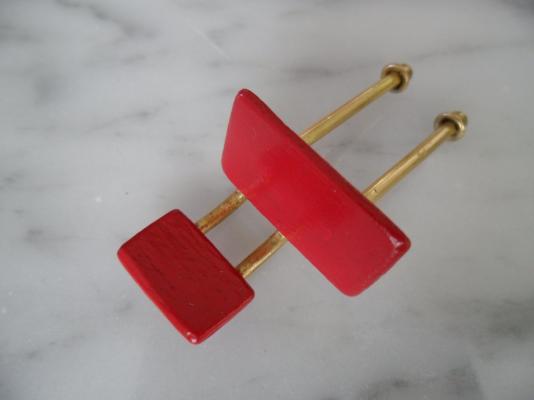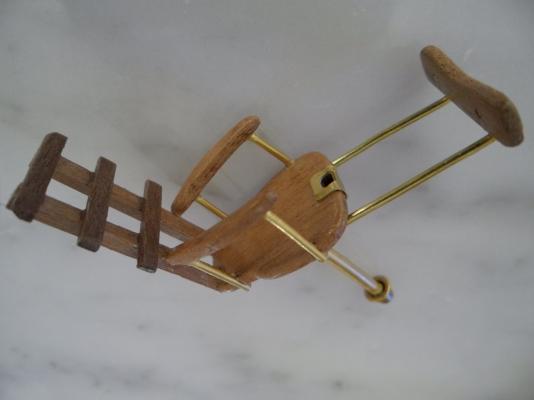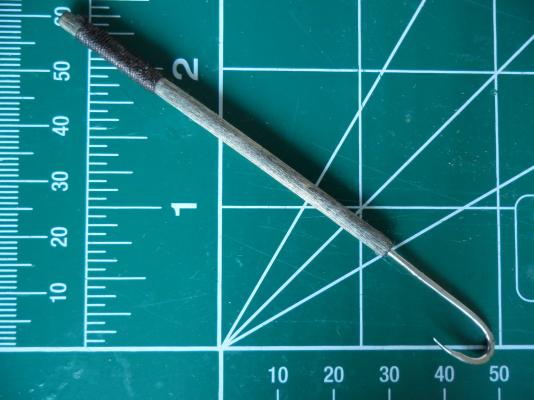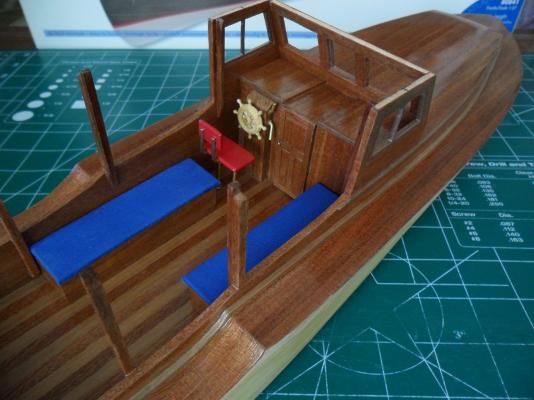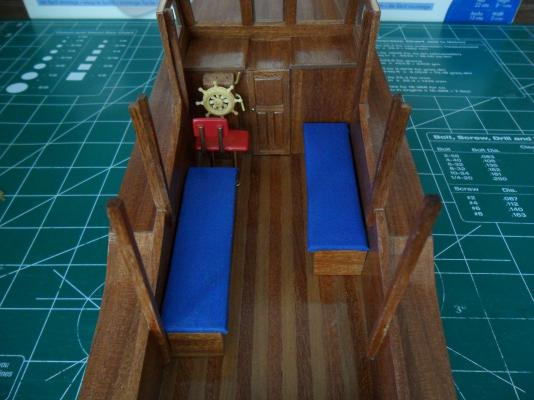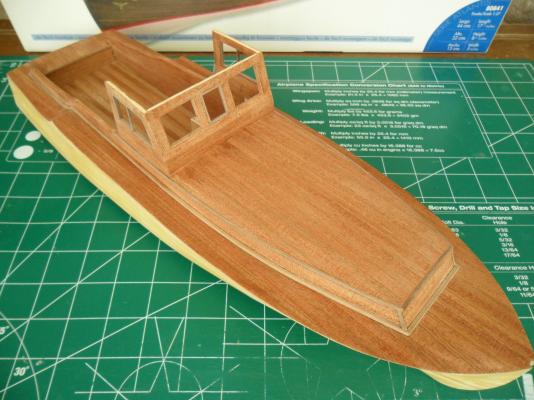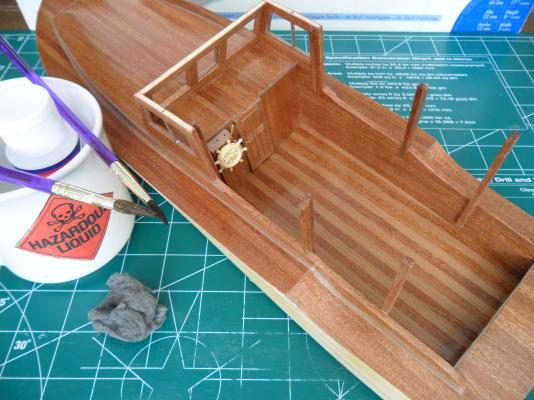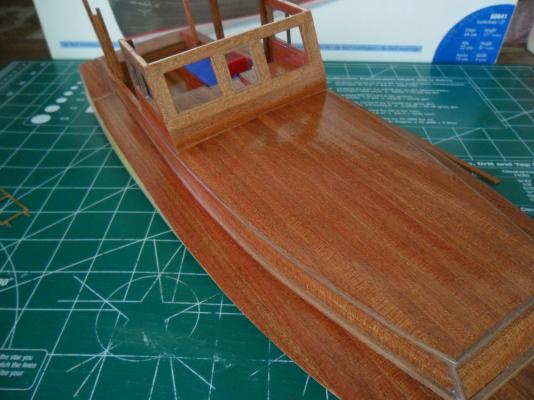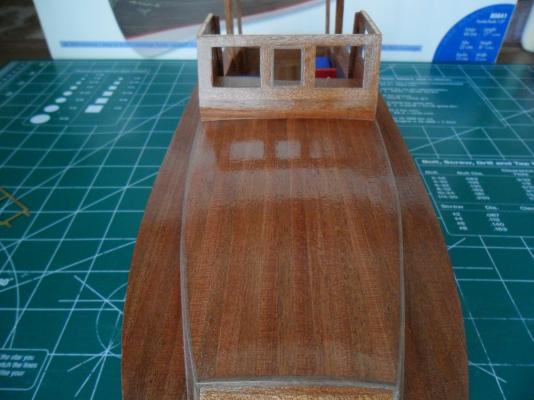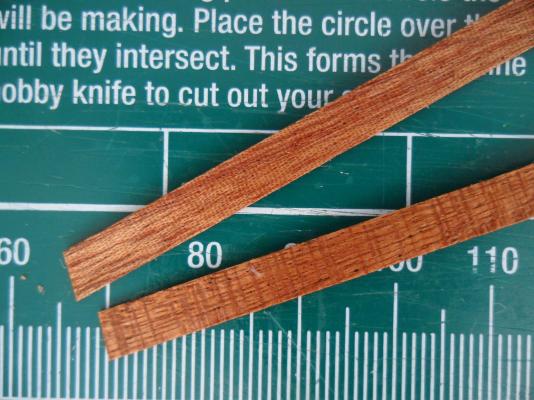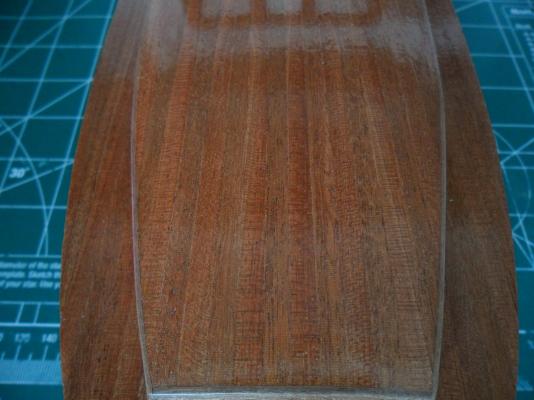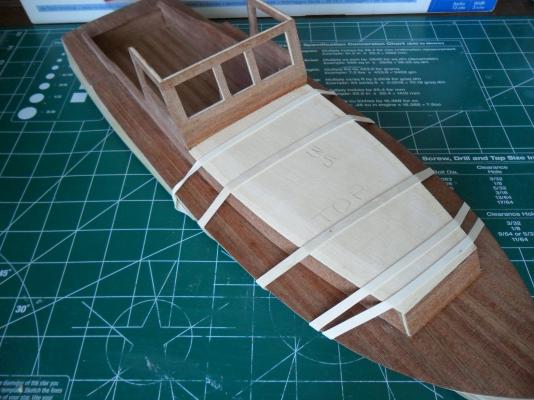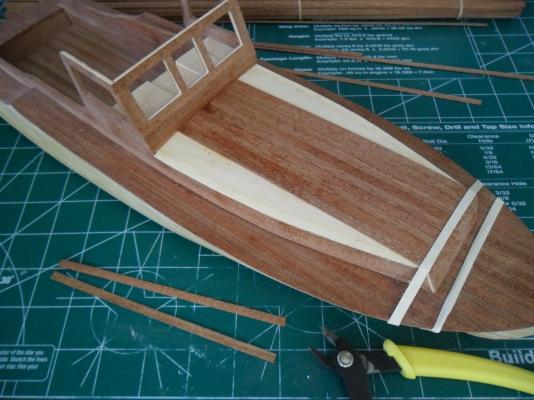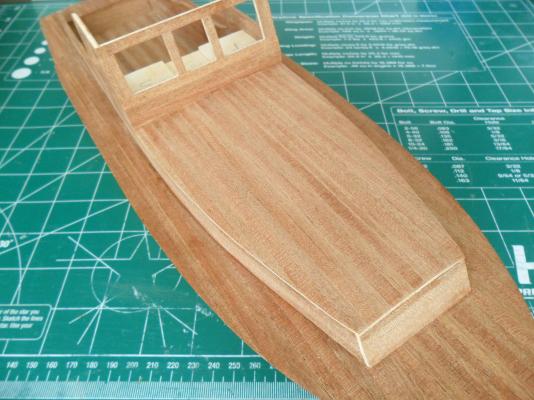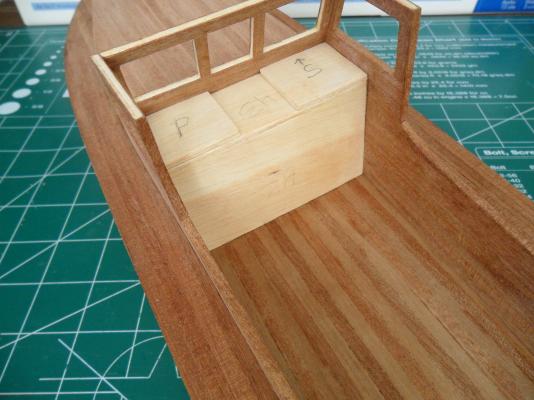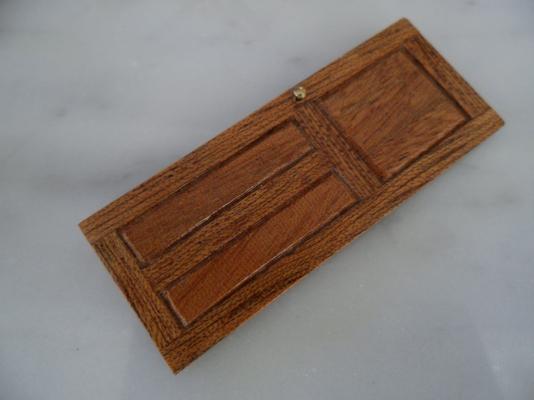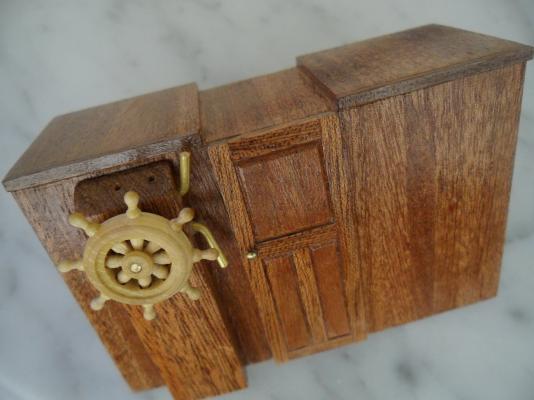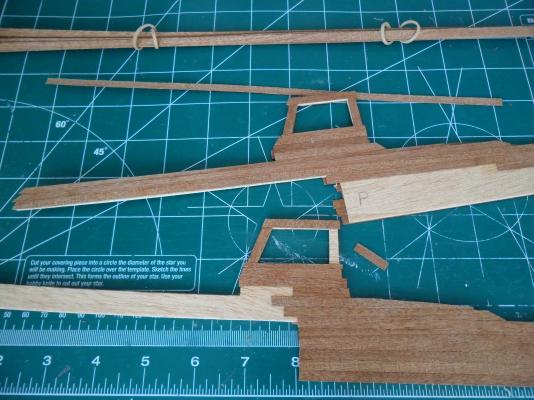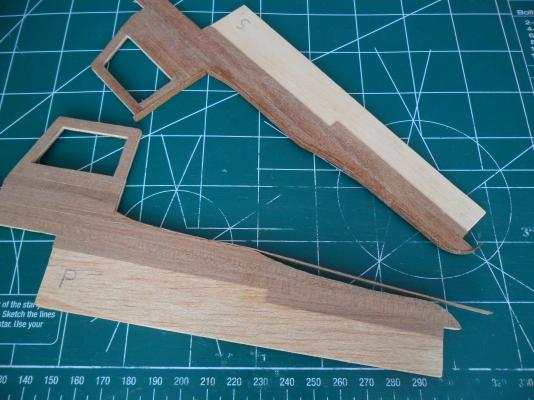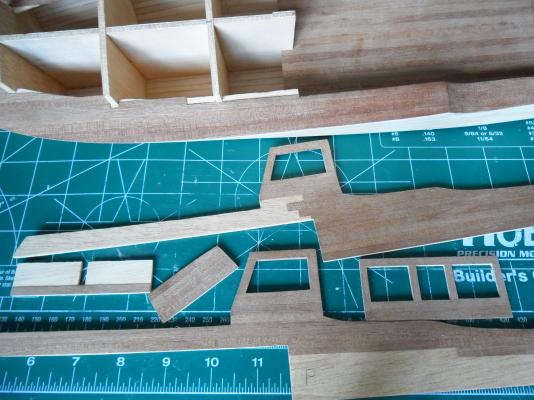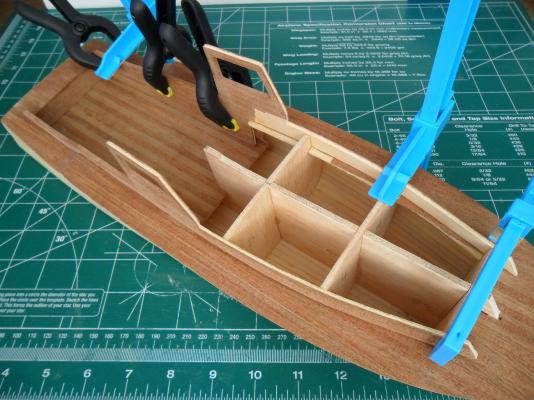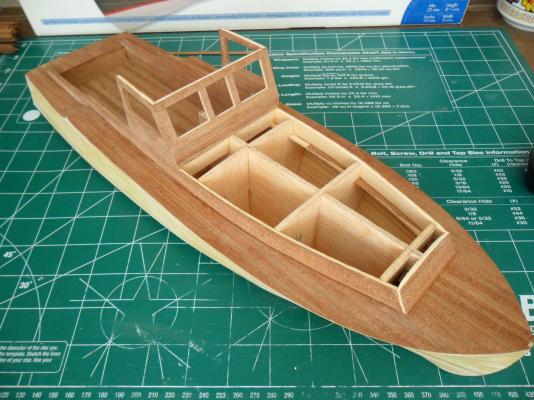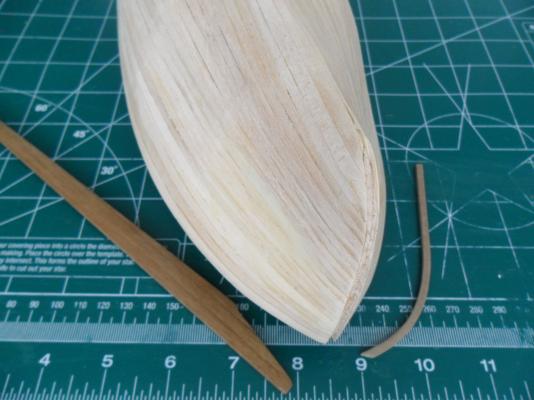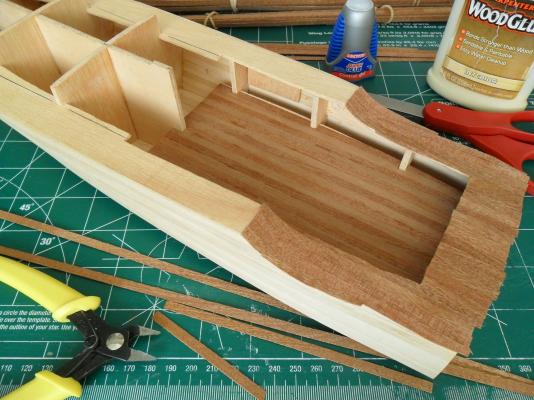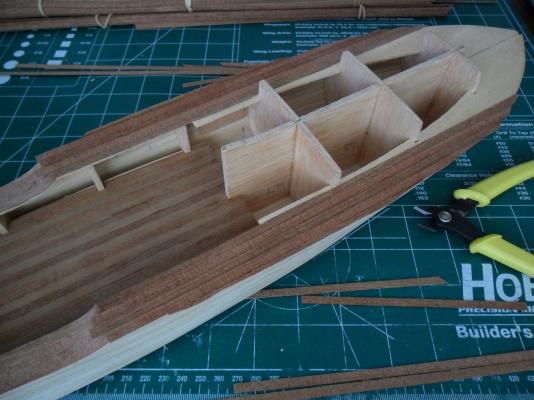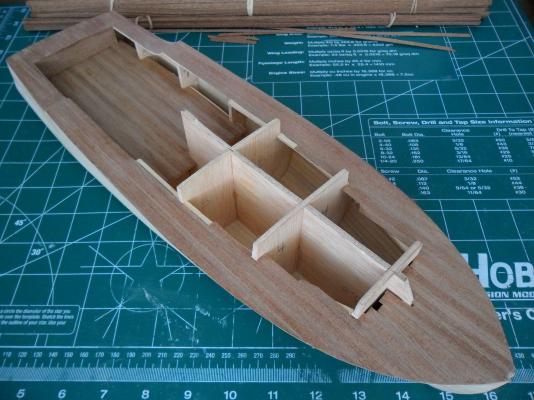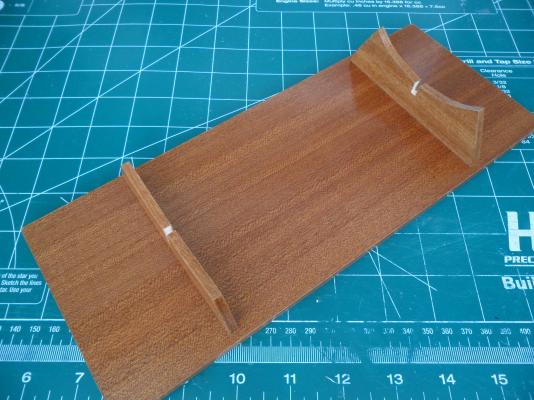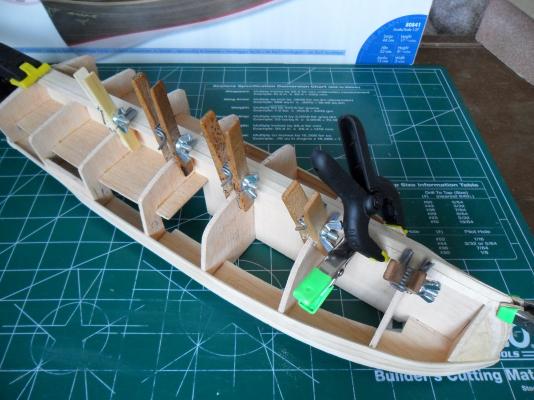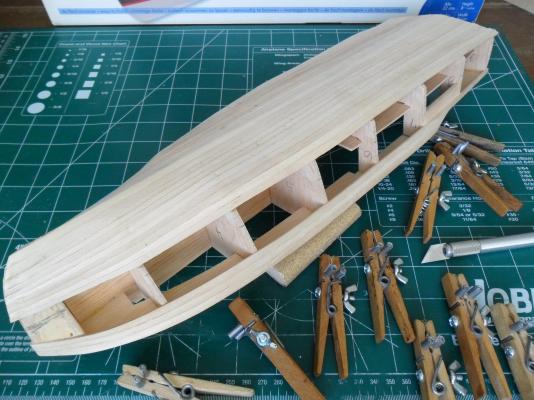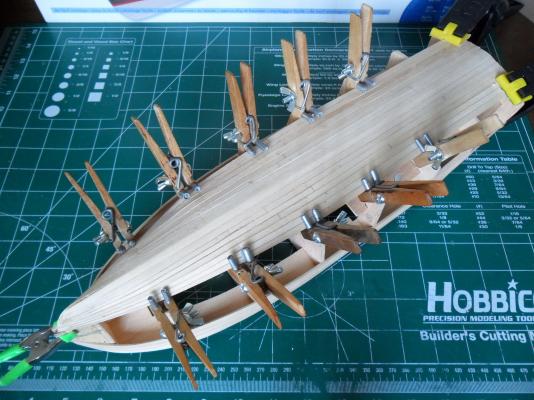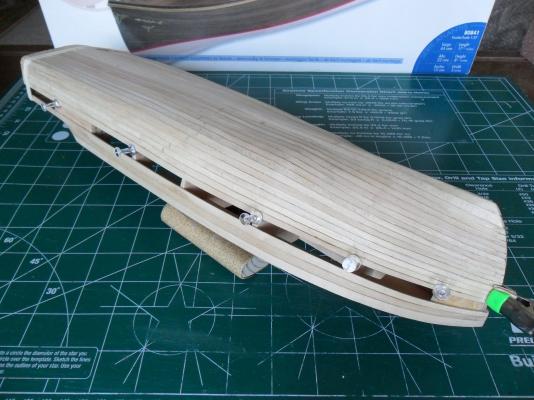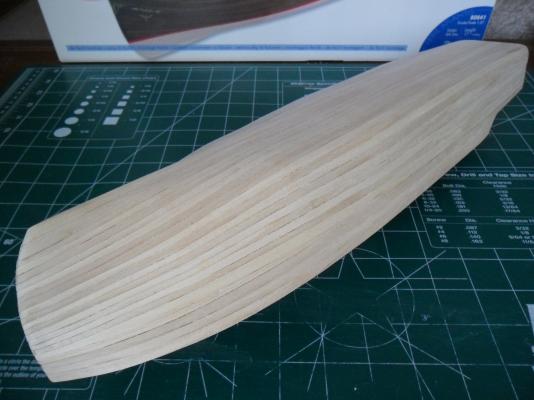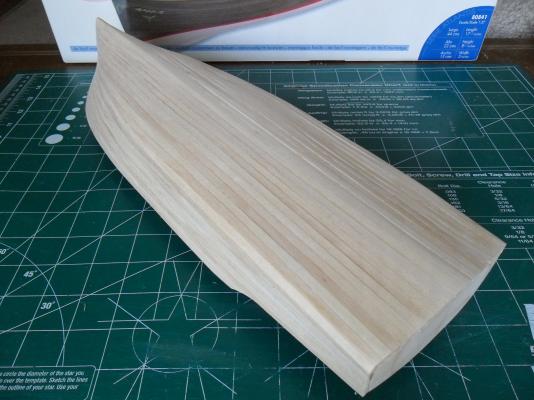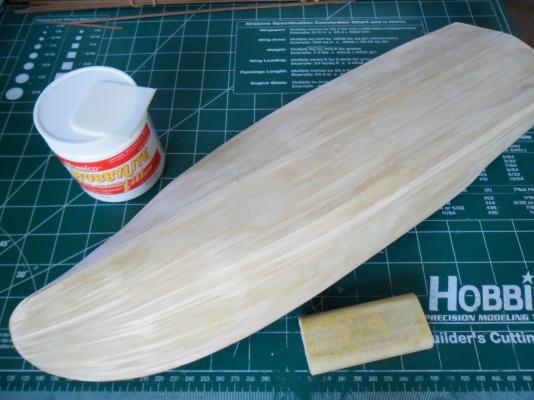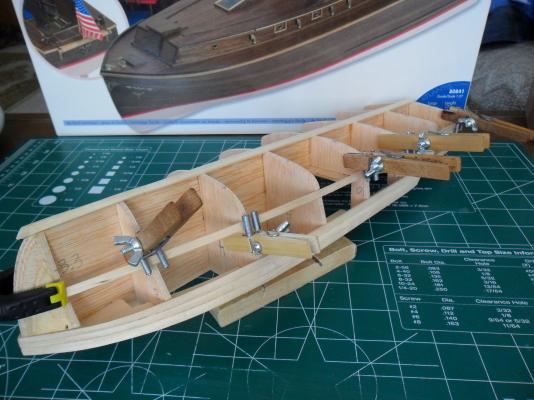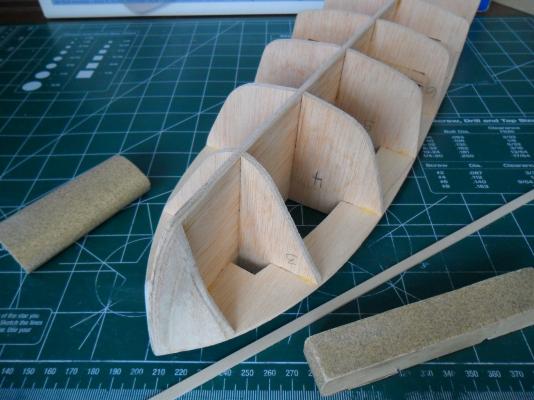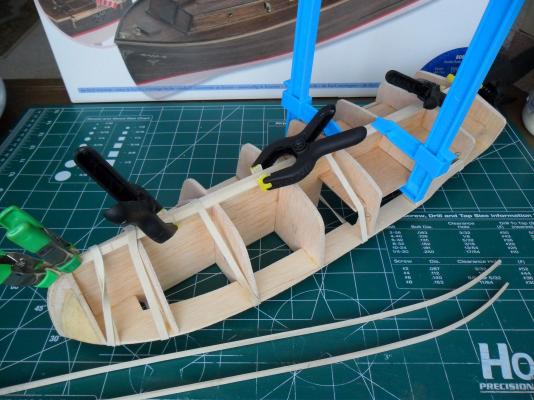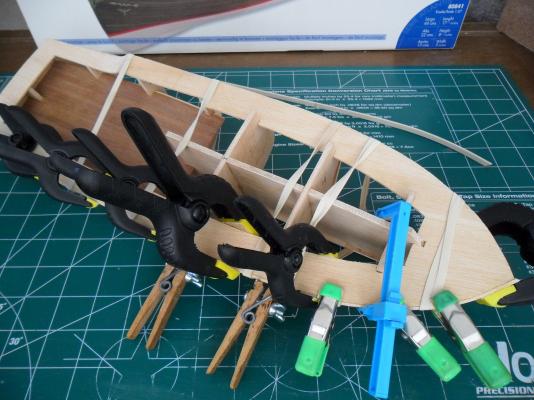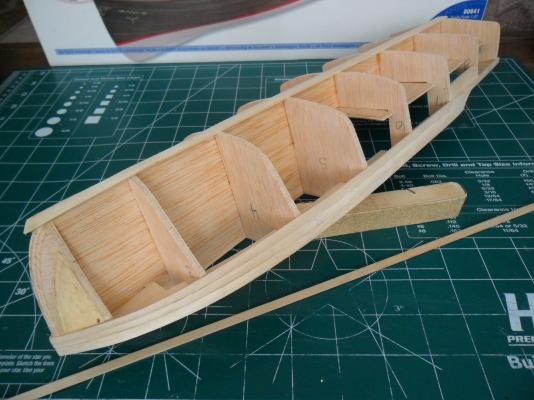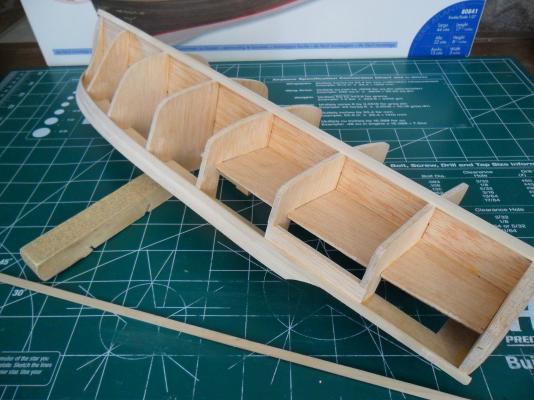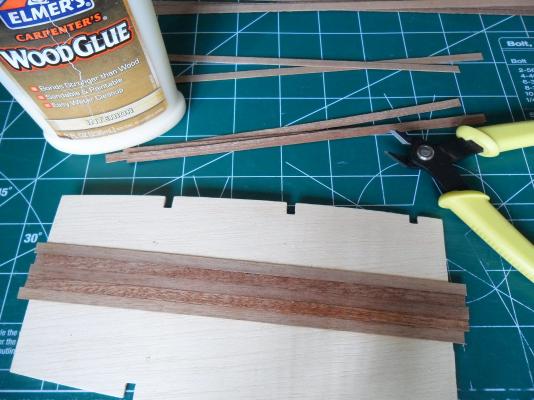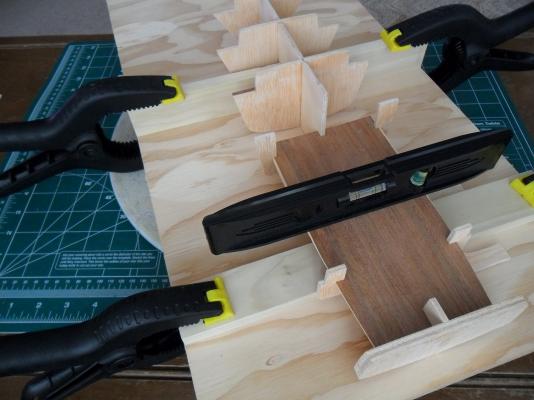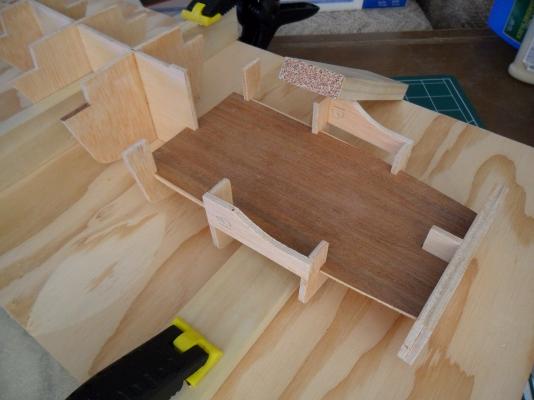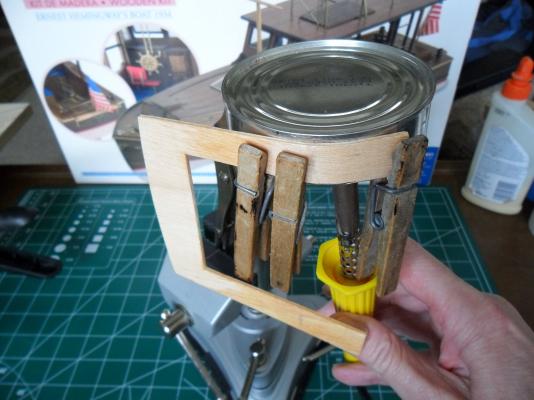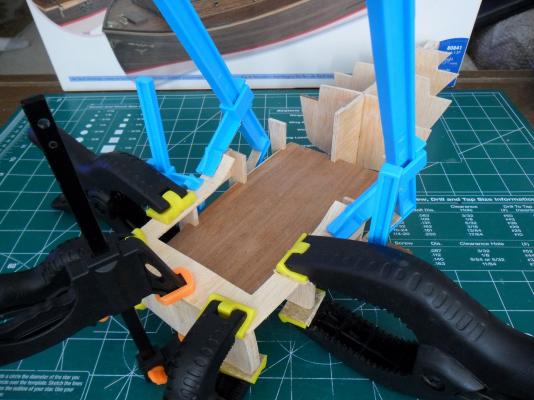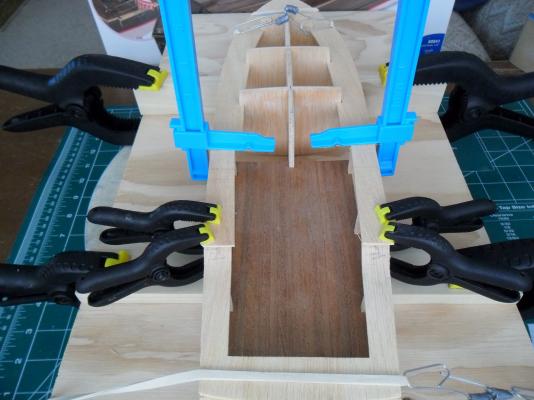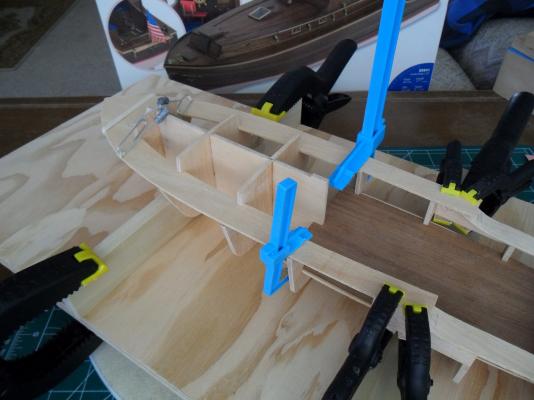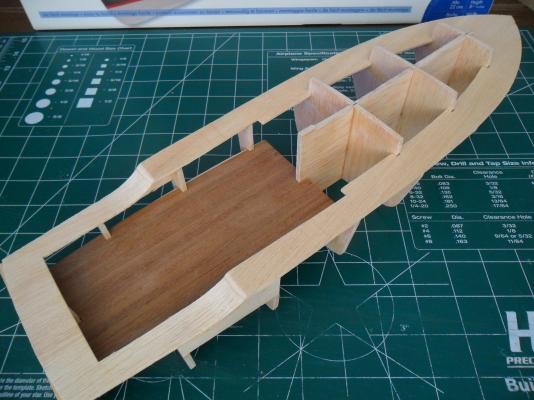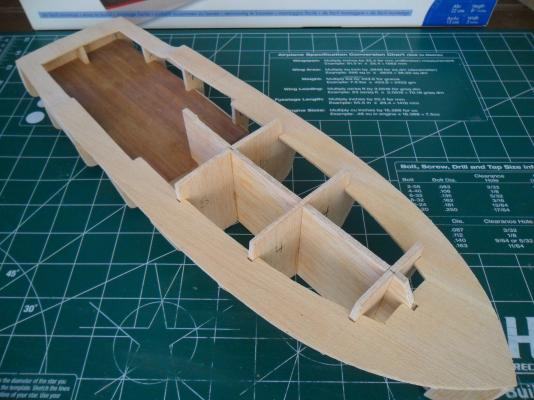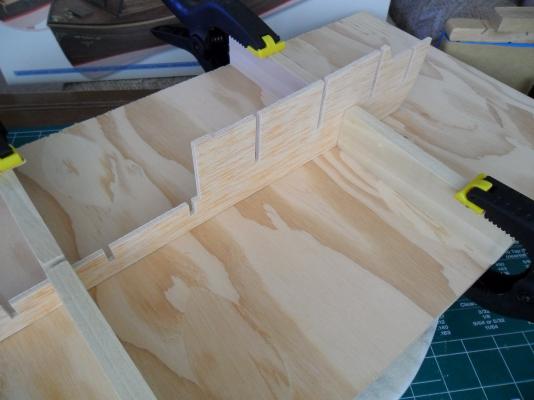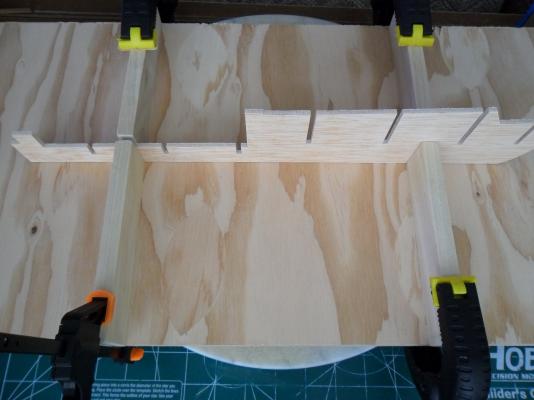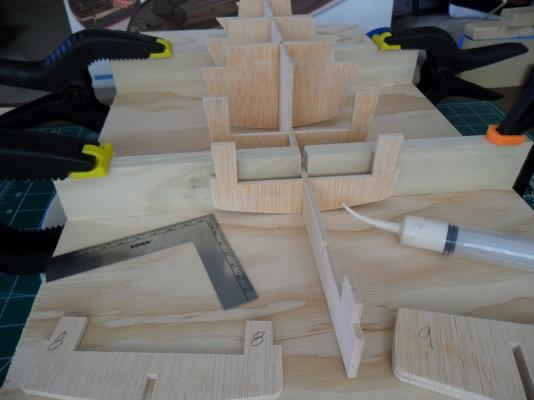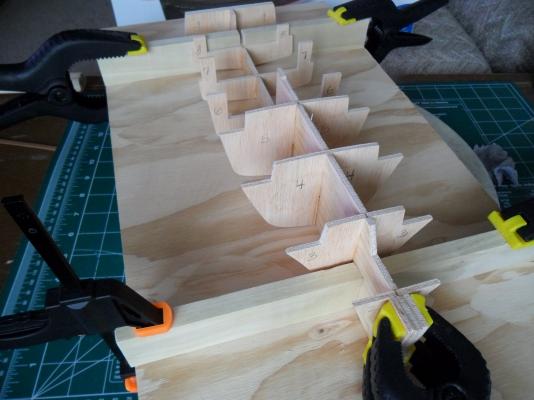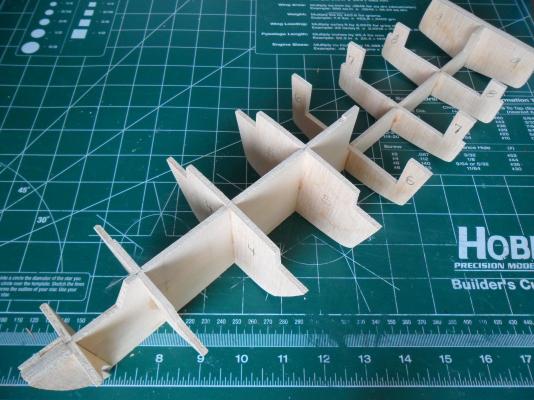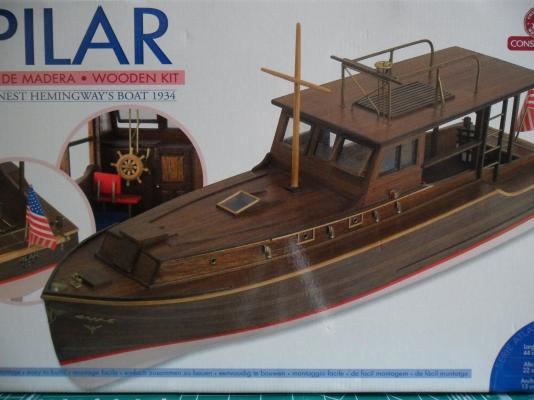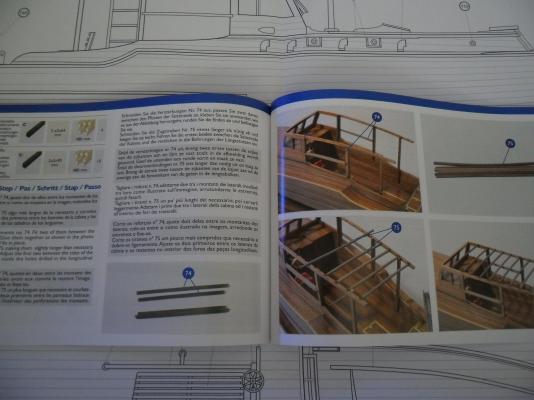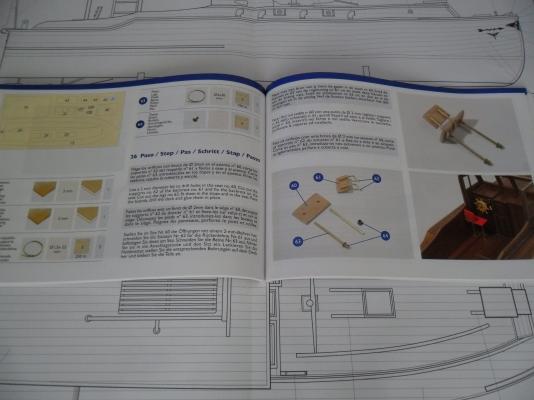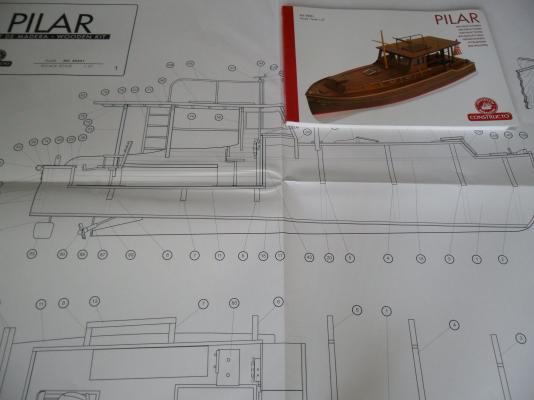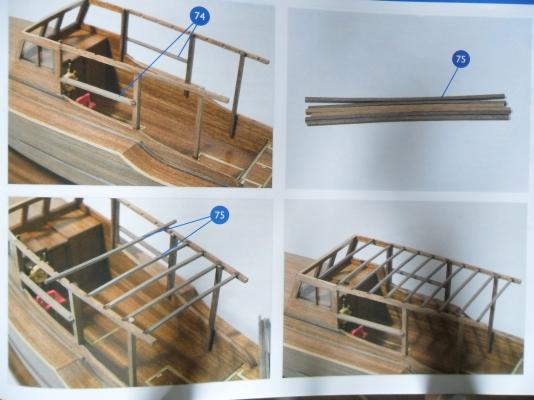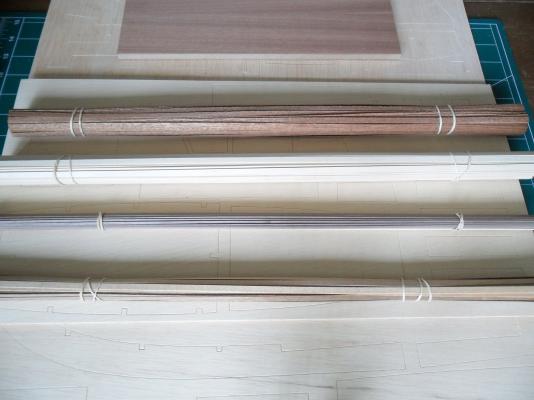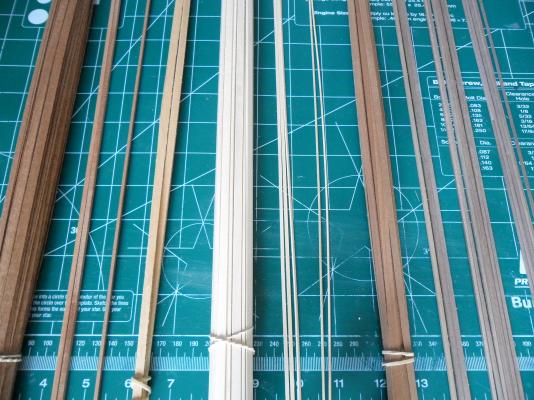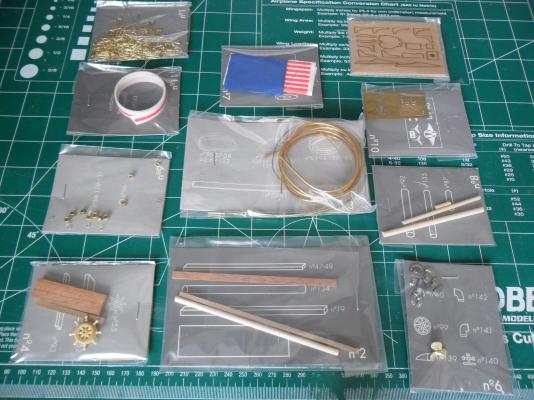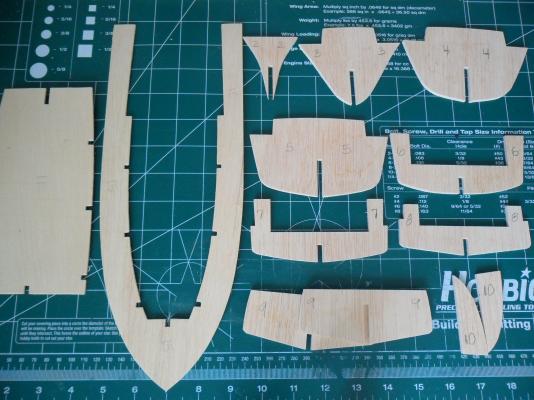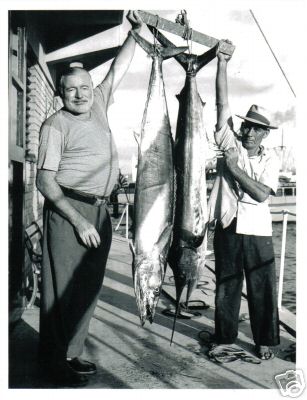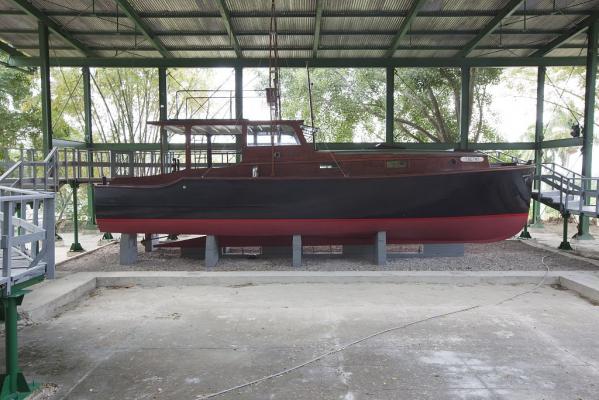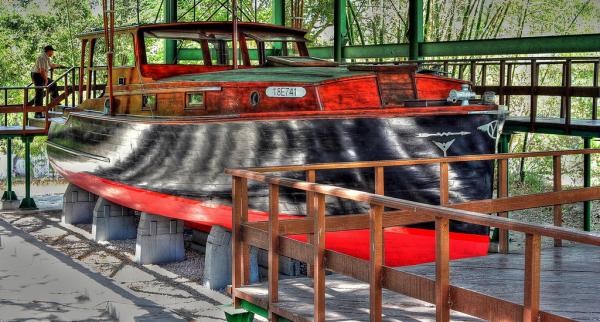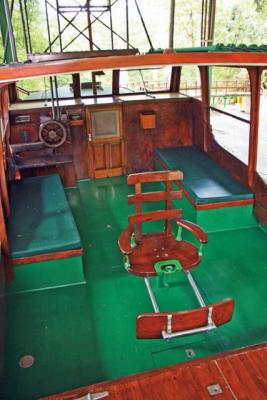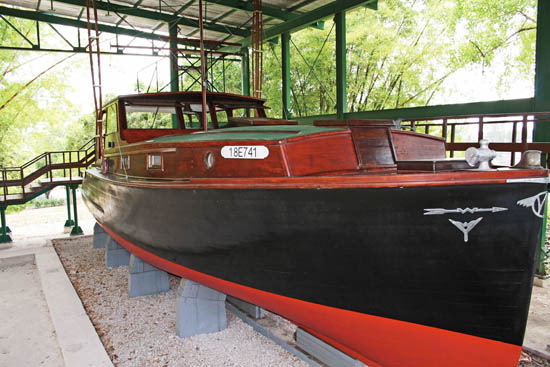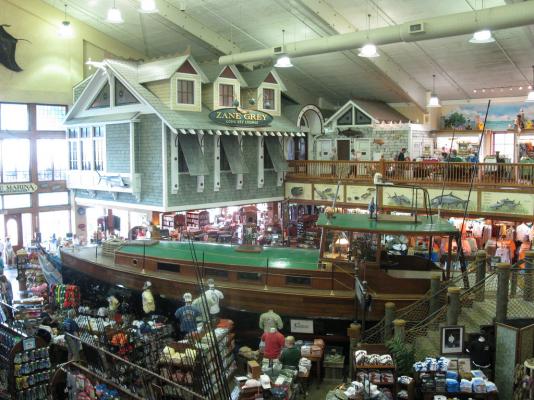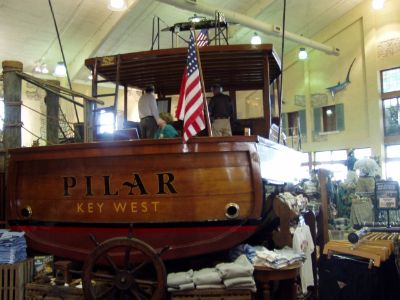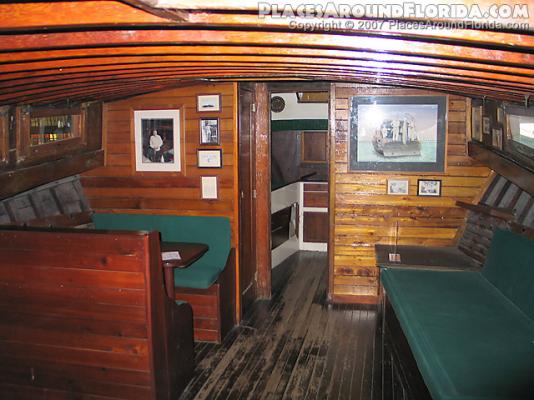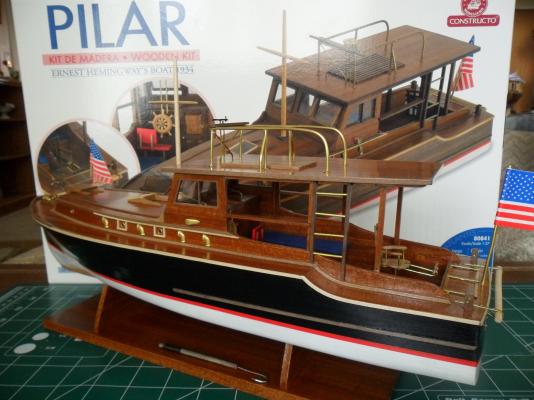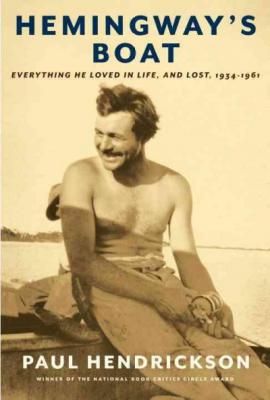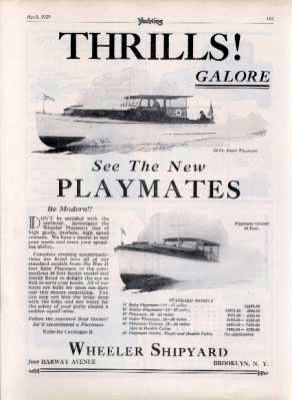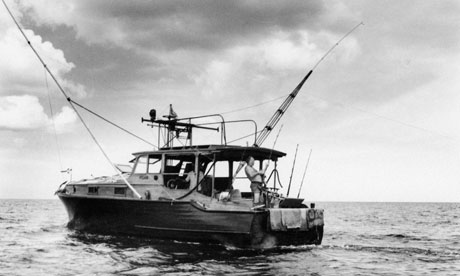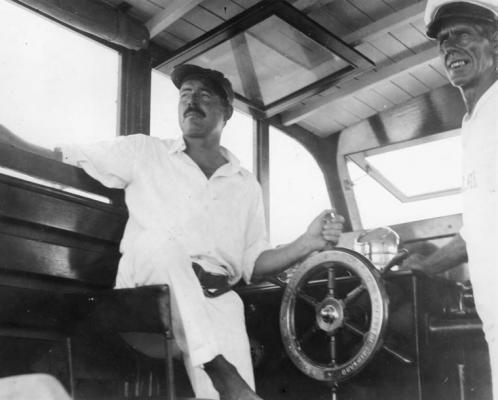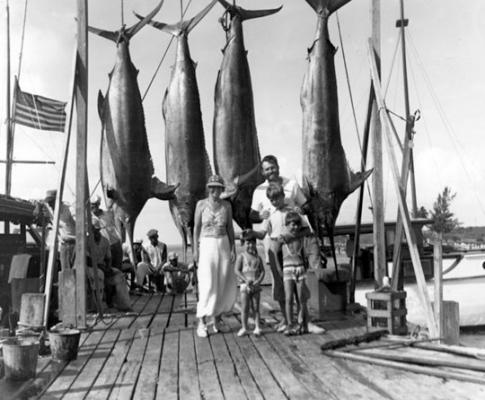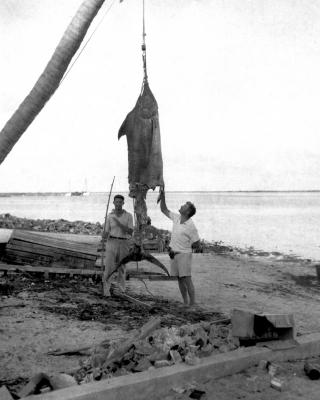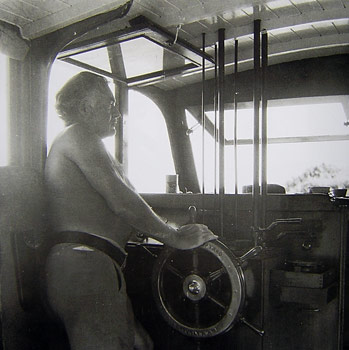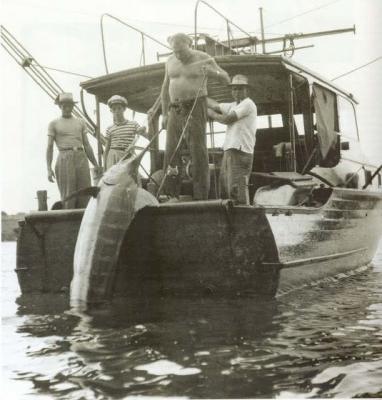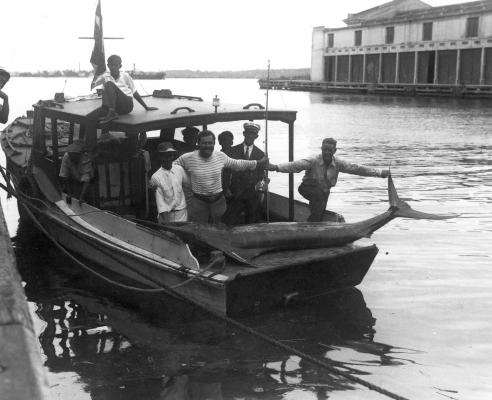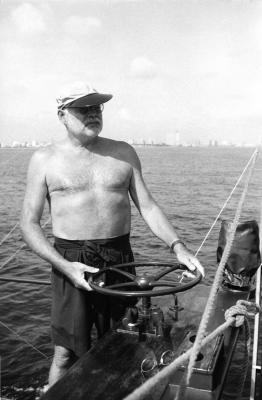-
Posts
53 -
Joined
-
Last visited
Content Type
Profiles
Forums
Gallery
Events
Everything posted by birchbaysider
-
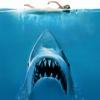
Pilar (Ernest Hemingway's Fishing Boat)
birchbaysider replied to birchbaysider's topic in Nautical/Naval History
I posted a detailed build log before all the content on this site was lost. I tried to repost as much as I could. Pilar by birchbaysider - FINISHED - Constructo - 1:27 (Ernest Hemingway's Fishing Boat, 1934) - - Kit build logs for subjects built from 1901 - Present Day - Model Ship World™ -

Where is a good place to buy from? - moved by moderator
birchbaysider replied to wdretired's topic in Wood ship model kits
Try Hobbylinc. They only carry a few manufacturers, but their prices are hard to beat. They also have good deals on supplies and tools. Hobbylinc -
Jon, Sorry to hear that soldering didn't work for you. I know you can get brass solder. Like I stated in my build log, I don't like working with metal. It's very difficult to get coiled wire straight. I tried this method of clamping it together and pressing down, but it didn't work well. The best way I found is to just take my time and straighten with my fingers, but I never get it perfect. As far as gluing, I started out using CA, but it always leaves a white residue, so I've switched to clear epoxy. With small round files, I give the ends of the wire a concave shape to get maximum surface area for gluing.
- 34 replies
-
- pilar
- constructo
-
(and 1 more)
Tagged with:
-
Thanks for the compliment. BlueJacket's Runabout looks like a great kit, but way out of my price range.
- 34 replies
-
- pilar
- constructo
-
(and 1 more)
Tagged with:
-
Pilar is finished, but sometime I would like to add outriggers and make it a real fishing boat. I'm gonna need a bigger boat
- 34 replies
-
- pilar
- constructo
-
(and 1 more)
Tagged with:
-
Thanks for the link. I've included it in my post on Pilar in the Nautical History Forum.
- 34 replies
-
- pilar
- constructo
-
(and 1 more)
Tagged with:
-
Thanks for the info. The article is in the July/August 2013 issue of Woodenboat Magazine. I put a hold on it at my local library. When Hemingway had the flying bridge added it came with a Model T steering wheel.
- 34 replies
-
- pilar
- constructo
-
(and 1 more)
Tagged with:
-
I painted the cabin roof black below the skylight to give the impression that the dark cabin is below. Skylight Lights, cross bitt & air shafts painted Port holes, air shafts & position light The model has one prop, but Pilar actually had twin screws. Hemingway ordered the boat with a 40 hp 4-cylinder Lycoming engine for trolling in addition to the standard 75 hp Chrysler Crown reduction gear engine. Prop & rudder Nameplate, stern roller, stern cleats & live well frame
- 34 replies
-
- pilar
- constructo
-
(and 1 more)
Tagged with:
-
I'm not fond of working with metal, so the flying bridge was a challenge. Marking holes to be drilled for the flying bridge Installing flying bridge railing supports As you can see in the photo, Pilar actually had six galvanized pipes running from the bridge up through the poop deck to the flying bridge, but the model has two. Hemingway at the helm Flying bridge platform made from Mansonia strips Flying bridge complete I alternated grain types of Sapele veneer on the poop deck like on the cabin roof and I think it turned out looking fine. Next step will be to work on the skylight, prop and rudder and small metal components.
- 34 replies
-
- pilar
- constructo
-
(and 1 more)
Tagged with:
-
Thanks for the comment, Jon. There's not much info on this kit and I wanted to share my build log with others who are interested in this famous American fishing boat.
- 34 replies
-
- pilar
- constructo
-
(and 1 more)
Tagged with:
-
Originally, Hemingway ordered the hull to be painted black. After a few years he had the hull re-planked with Mahogany and it was left all natural above the waterline. The kit shows white below the waterline with all natural wood above. The restored Pilar in Cuba has a red, yellow and black hull with green and natural wood above deck. The pilar replica in Florida has red and black below the waterline with natural wood and green above. Early years of Pilar at sea Restored Pilar in Cuba Pilar replica in Florida I like this color scheme because of the contrast between the white, black, red waterline and natural Sapele wood. Next will be to construct the flying bridge.
- 34 replies
-
- pilar
- constructo
-
(and 1 more)
Tagged with:
-
Hatch frames Poop deck frame Poop deck frame attached Poop deck underside I installed the acetate windows and kept accidentally poking them out, so I put some temporary covers over them. Poop deck attached Mast frame, anchor cover, companionway door & lid installed Next will be to paint the hull.
- 34 replies
-
- pilar
- constructo
-
(and 1 more)
Tagged with:
-
Bench seats Captain's chair Fish fightin' chair I thought that Pilar needed a gaff hook to land all those big Marlin and Tuna so I fished a barbless hook out of my tackle box and made one trying to make it look well used. Gaff hook with wrapped handle for improved grip Bridge completed Next will be to build the hatch frames and complete the poop deck.
- 34 replies
-
- pilar
- constructo
-
(and 1 more)
Tagged with:
-
Mansonia edge trim & window frames installed Poop deck supports attached & everything topside varnished I had some Sapele veneer from a previous build that was a different grain type than the veneer that was supplied with this kit and alternated them on the cabin roof. Sapele veneer Cabin roof Next will be to construct the seats and complete the bridge.
- 34 replies
-
- pilar
- constructo
-
(and 1 more)
Tagged with:
-
Cabin roof attached Planking cabin roof Cabin roof completed The bridge console frame had to be carefully shaped to fit in place and then removed for completion. Bridge console Cabin door made from varying grain types of Sapele strips with some decorative carving Completed bridge console Next up will be to add some edge trim and varnish everything topside.
- 34 replies
-
- pilar
- constructo
-
(and 1 more)
Tagged with:
-
Planking cabin sides Visible portions of cabin & bridge parts planked Attaching cabin sides Bridge window frame & cabin front planked & attached Next will be to construct the cabin roof.
- 34 replies
-
- pilar
- constructo
-
(and 1 more)
Tagged with:
-
Cutting the rabbet for the stem took some time getting it straight, the right depth and width so there would be no gaps. Rabbet cut, stem bent & keel planked with Mansonia veneer Planking the aft main deck with Sapele veneer Planking the fore main deck Main deck planked I built the display stand to hold the hull steady while marking the waterline. Display stand planked with Sapele veneer Brewed some joe & marked the waterline Next will be to start construction of the cabin.
- 34 replies
-
- pilar
- constructo
-
(and 1 more)
Tagged with:
-
I put temporary battens in place and marked the positions with tape. Due to the shape of the hull, the way the planks wanted to naturally lay was to pile up on top of each other near the bow, so I thought this boat would be a challenge to plank. But since almost every plank needed to be tapered one half width at the bow they were easy to bend into position. Temporary batten Temporary battens position marked with tape First strake next to the garboard Halfway Near finished Planking complete Hull sanded and ready to paint Next step will be work on the stem and keel.
- 34 replies
-
- pilar
- constructo
-
(and 1 more)
Tagged with:
-
Frame faired and ready to plank with Balsa filler blocks at the bow Attaching garboard strake alongside keel Attaching sheer strake Since Pilar's stern had been lowered 1 foot for fishing, the first strake from the top to extend the length of the hull would be the third one down. Garboard & sheer strakes attached Next will be to take some measurements and plan how to finish planking the hull.
- 34 replies
-
- pilar
- constructo
-
(and 1 more)
Tagged with:
-
I decided to alternate Mansonia and Sapele veneer to plank the bridge deck. Bridge deck planked and attached Hemingway ordered Pilar with the back 10 feet of the stern lowered 1 foot for fishing, so the main deck is 2 pieces. Aft main deck reinforcements attached Bending aft main deck Aft main deck attached Fore main deck attached Main decks attached Next will be to fair the frame in preparation for planking.
- 34 replies
-
- pilar
- constructo
-
(and 1 more)
Tagged with:
-
I know the importance of the frame being perfectly straight, so I wanted to come up with a jig that would keep the keel from twisting and at 90 degrees to the bulkheads. Keeping the keel straight Fixing the bulkheads Bulkheads fixed Frame complete Next will be to plank and attach the bridge deck.
- 34 replies
-
- pilar
- constructo
-
(and 1 more)
Tagged with:
-
I had a build log of Pilar before the content was lost and wanted to repost the photos. Pilar was Ernest Hemingway’s faithful yacht, notorious for chasing big Marlin, Tuna and German u-boats. Many people call it The Pilar or El Pilar, but it is just Pilar. I posted a history of Pilar on the Nautical History Forum for those who are interested. The plans come with color photos The kit includes Lime, Ayous, Mansonia, Mukali & Sapele First step is to fix the bulkheads to the keel.
- 34 replies
-
- pilar
- constructo
-
(and 1 more)
Tagged with:
-

Pilar (Ernest Hemingway's Fishing Boat)
birchbaysider replied to birchbaysider's topic in Nautical/Naval History
During World War II, Pilar was converted by her master into a patrol boat, armed with light machine guns, hand grenades, bazookas, satchel charges and HFDF or “Huff-Duff” high frequency direction-finding equipment. The idea, authorized by the American ambassador to Cuba, was that Pilar’s crew might be able to lure a German sub to the surface and cause some damage and maybe lob some grenades down the open hatch. They were disguised as a scientific vessel conducting experiments. A u-boat was spotted once moving fast on the surface, but even Pilar’s marlin-fighting engines couldn’t keep up with it. Pilar never saw any action. When Ernest left Cuba in 1960 with fourth wife Mary, he knew he would be back. But the Bay of Pigs invasion in 1961 cut off his return and separated him from his beloved Pilar. Hemingway & longtime captain Gregorio Fuentes Hemingway had specified in his will that the boat be left to his long time fishing companion/cook/bartender/mentor and captain of three decades in Cuba, Gregorio Fuentes, upon whom many of his characters are said to have been based, including Santiago from "The Old Man and the Sea" and Eddie from "Islands in the Stream", although many say that it was Hemingway’s first captain, Carlos Gutierrez that was the inspiration for these stories. Hemingway and Fuentes had come to an agreement that as soon as either one of them died, Pilar would never sail again. After Hemingway's suicide in Ketchum, Idaho, Fuentes considered scuttling the boat out at sea, but left the boat to Hemingway’s estate, Finca Vigia in possession of the Cuban government. Restored Pilar in Cuba The link below is to a facinating video documentary on the restoration of Pilar and Finca Vigia and Hemingway's life. Hemingway in Cuba A full scale replica of Pilar is on display in the World Wide Sportsman-Bass Pro Shops store in Islamorada, Florida. Maybe some of you have seen it. Pilar replica in Florida Completed model If interested you can look for my reposting of the build log photos and the finished boat in the completed gallery. -
I had a build log of Pilar before all the content was lost and I plan on reposting the build log photos soon as well as the completed model photos. This history of Pilar was at the beginning of my build log, but I thought the Nautical History forum would be more appropriate. I’m very interested in the historical aspects of boats and ships and this vessel appealed to me. I read a book about Pilar and another about Ernest Hemingway's life as well as what I could find online. I thought I would share what I learned when I researched this famous American boat. I’ve included some unnecessary photos of fish caught from Pilar, but I expect some of you may have caught a fish or two before. Book on Pilar An article in Woodenboat Magazine written by Hemingway's niece is available online. It covers the creation of a film-double of Pilar in the movie Hemingway & Fuentes, about Hemingway and his longtime captain Gregorio Fuentes, directed by Andy Garcia and starring Anthony Hopkins and Annette Bening. Hemingway's Pilar by Hilary Hemingway Pilar was Ernest Hemingway’s faithful yacht, notorious for chasing big Marlin, Tuna and German u-boats. Many people call it The Pilar or El Pilar, but it is just Pilar. In 1926, Hemingway had gone to the bullfights in Zaragoza, Spain. It was there that he witnessed the Pilar shrine (in honor of the patron saint of Zaragoza). It was the name of the heroine in "For Whom the Bell Tolls" and also the nickname for his then wife Pauline. When he got back from African safari in 1934 he commissioned a fishing boat to be built to his own specifications from Wheeler Shipyard, Inc. in Brooklyn, NY. Hemingway liked the company's signature model the Playmate, known throughout the boating industry, but he wanted a few changes. These modifications Hemingway ordered for Pilar at Wheeler raised the cost $495 from the $7,000 base price: ⦁ Four 75 gallon galvanized gas tanks ⦁ Two copper lined fish boxes ⦁ A live well ⦁ Hull to be painted black ⦁ A 40 hp 4-cylinder Lycoming engine for trolling in addition to the standard 75 hp Chrysler Crown reduction gear engine (It could do 16 knots with both engines) ⦁ Cockpit enclosed with copper screens ⦁ Starboard-side bunk to be a foot wider to better accommodate the bulk of Pilar’s master ⦁ Wooden roller spanning the transom to aid in hauling large fish aboard ⦁ The back 10 feet of the stern lowered 12 inches for fishing It could sleep six in the cabin and two in the cockpit. Later, a flying bridge was added. Wheeler Shipyard Playmate Pilar was delivered by Wheeler to Hemingway in Miami and then on to its homeport of Key West. He made three trips with the boat to the Bimini Islands wherein his fishing, drinking, and fighting exploits drew much attention and remain part of the history of the islands. Pilar at sea Hemingway & his first captain Carlos Gutierrez 1934 In Cuba, Pilar was docked at Cojimar, a small fishing village east of Havana, which was the inspiration for Ernest Hemingway's "The Old Man and the Sea". Pilar has been restored and is now on display ten miles east of Havana at Hemingway's Cuban home between 1940 and 1960 Finca Vigia, which has been turned into a museum by the Cuban government. Hemingway's famous visitors, included Gary Cooper, Spencer Tracy, Errol Flynn, and Ava Gardner, who is most fondly remembered here for stories of her nude swims in the swimming pool (sorry, couldn‘t find any photos, but I‘ll keep looking). Hemingway & family after a day's fishing Big Tuna On one trip, Hemingway’s fishing partner Mike Strater hooked a trophy Black Marlin and when he got it close to the boat, sharks appeared. During the landing of the fish, Hemingway used a Thompson submachine gun to shoot the sharks in an attempt to ward them off. The effect of the shark blood in the water attracted a pack of sharks to Pilar’s stern, which eventually did their damage to the fish. The Marlin weighed more than 500 lbs in its half eaten state. It was projected to be more than 1,000 lbs when whole. In the end, the state of the Marlin recalls somewhat that of the monster Marlin in Hemingway's later masterpiece, "The Old Man and the Sea". Henry Strater's Black Marlin, Bahamas, 1935 In addition to fishing trips on Pilar, Hemingway contributed to scientific research which included collaboration with the Smithsonian Institution. During his first visit to Cuba with Pilar, Hemingway hosted Charles Cadwalader who was the director of the Philadelphia Academy of Natural History and Henry Fowler, who was the Academy’s chief ichthyologist. These two scientists were in Cuba trying to determine the taxonomy of Marlin species. They were attempting to determine if White, Blue, Black, and Striped Marlin were different species, or just color variants of the same species. As a result of their efforts on the boat, they reclassified the North Atlantic Marlin variants. Hemingway at the helm Hemingway on the flying bridge (To be continued)
About us
Modelshipworld - Advancing Ship Modeling through Research
SSL Secured
Your security is important for us so this Website is SSL-Secured
NRG Mailing Address
Nautical Research Guild
237 South Lincoln Street
Westmont IL, 60559-1917
Model Ship World ® and the MSW logo are Registered Trademarks, and belong to the Nautical Research Guild (United States Patent and Trademark Office: No. 6,929,264 & No. 6,929,274, registered Dec. 20, 2022)
Helpful Links
About the NRG
If you enjoy building ship models that are historically accurate as well as beautiful, then The Nautical Research Guild (NRG) is just right for you.
The Guild is a non-profit educational organization whose mission is to “Advance Ship Modeling Through Research”. We provide support to our members in their efforts to raise the quality of their model ships.
The Nautical Research Guild has published our world-renowned quarterly magazine, The Nautical Research Journal, since 1955. The pages of the Journal are full of articles by accomplished ship modelers who show you how they create those exquisite details on their models, and by maritime historians who show you the correct details to build. The Journal is available in both print and digital editions. Go to the NRG web site (www.thenrg.org) to download a complimentary digital copy of the Journal. The NRG also publishes plan sets, books and compilations of back issues of the Journal and the former Ships in Scale and Model Ship Builder magazines.



